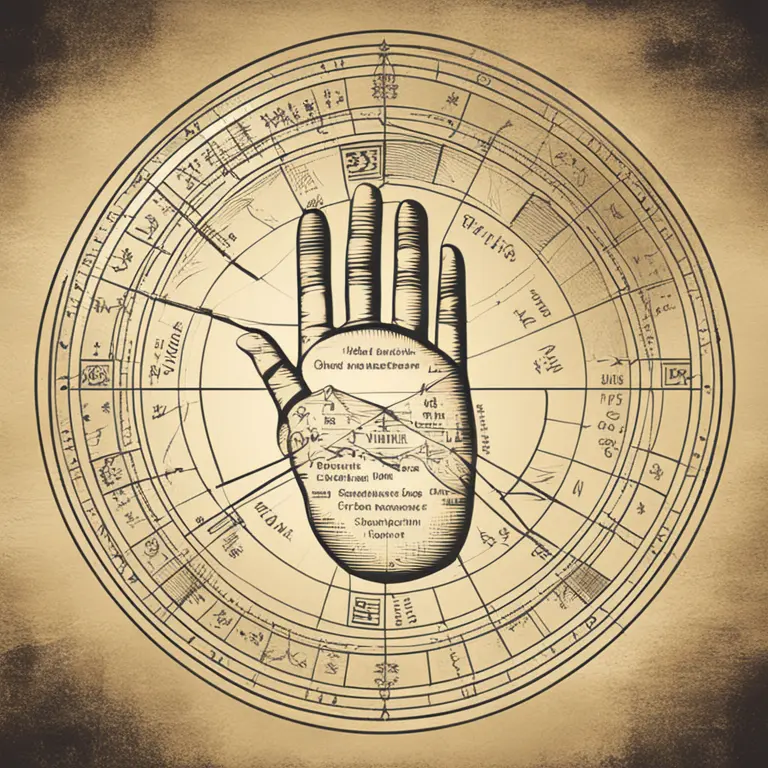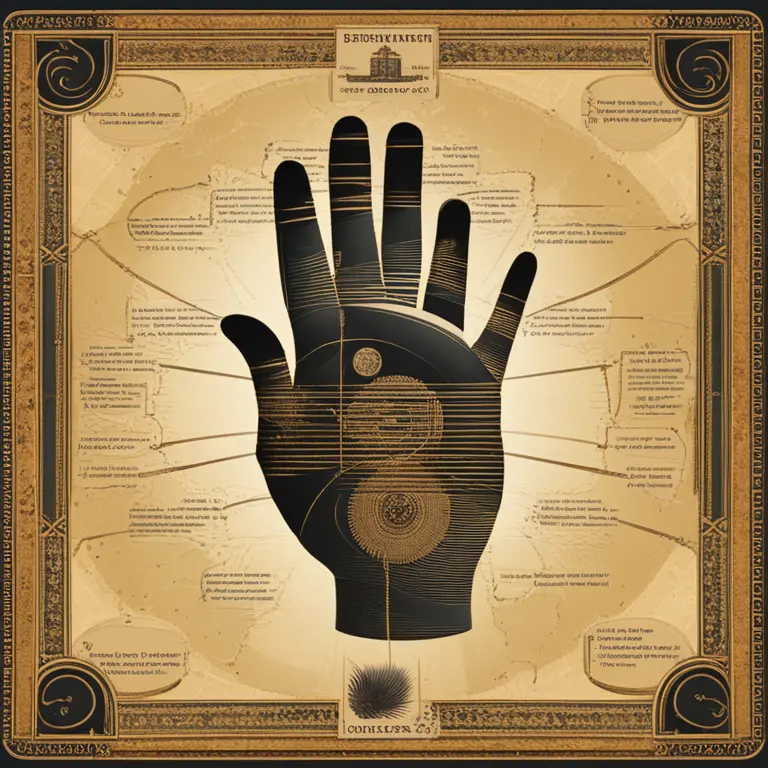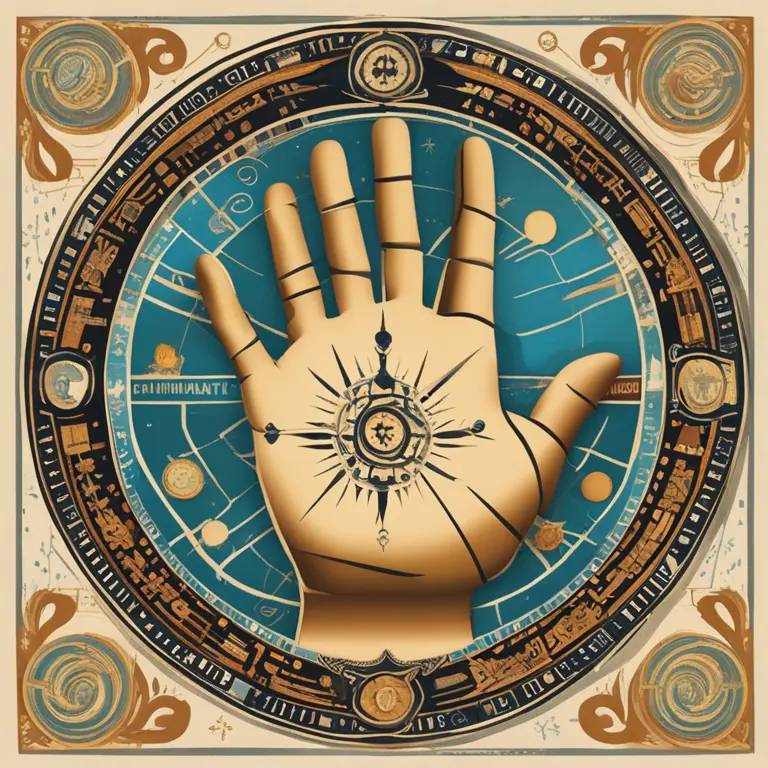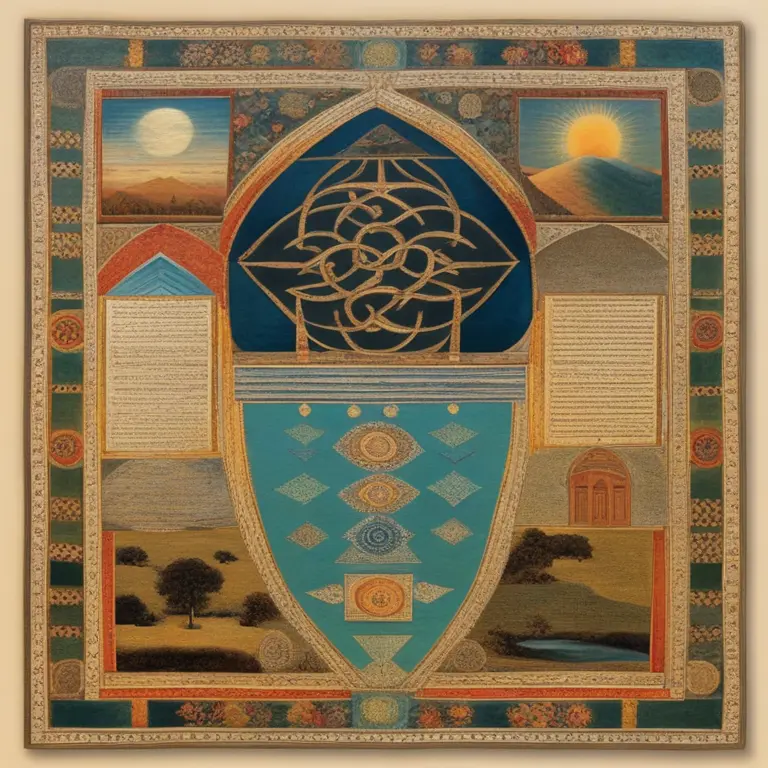
The Origins of Palmistry: Main Insights
Dive into the fascinating beginnings of palmistry and understand the historical context that shaped this age-old practice.
article by Nora Pennington
Roots in Antiquity
The art of palmistry, also known as chiromancy, traces its roots back to ancient civilizations. It’s a practice that spans across different cultures and epochs, suggesting a universal fascination with the human hand as a source of personal insight. In historical terms, palmistry likely started as a way for humans to add context and understanding to their lives through the interpretation of physical characteristics. From ancient India to China, the threads of palmistry weave a rich tapestry connecting people through a shared quest for knowledge and guidance.

The Realm of the Spiritual
Palmistry's emergence is deeply intertwined with the spiritual practices of the past. Initially, it was the purview of priests and sages who were believed to possess the divine knowledge necessary to interpret the lines and mounts on palms. It has often been used as a tool for counsel, aligning with the belief that the gods have imprinted a life path on the very hands of each individual. These interpretations were deeply linked to the cosmos, and palmists would often play the roles of astrologers and healers, cementing palmistry’s place in the esoteric traditions of many cultures.

The Spread through Cultures
As ancient trade routes expanded, so too did the practice of palmistry. It found fertile ground especially in the cross-cultural exchanges of the Hellenistic world, where Greek knowledge mingled with that of older civilizations. Later, during the Middle Ages, Arabs helped proliferate chiromantical knowledge to Europe, evolving it further. Despite opposition from the church which often branded it as heretical, the fascination with palm reading persisted, becoming part of the renaissance period's revival of ancient wisdom and later occult traditions.

Science or Superstition?
Throughout its history, palmistry has straddled the line between science and superstition. In eras of rationalization, the practice has often been maligned as mere fortune-telling. Yet, it has also seen periods of scholarly examination. Today, while it's not considered a science, the psychological aspect of palmistry can't be ignored. It serves many as a reflection of personal characteristics, placing them in a landscape that motivates introspection and self-awareness. There is a growing interest in the psychodynamic aspects, where palmistry is viewed under the lens of its narrative ability rather than predictive accuracy.

Modern Relevance
In the age of personalization, palmistry remains relevant by adapting to current trends. Today’s palmists integrate holistic wellness concepts and self-help techniques into their readings. The digital world has spawned apps and online platforms that offer palm readings, ensuring that this ancient practice continues to evolve and engage with modern seekers. The perennial human desire to understand oneself better keeps palmistry alive and well in the 21st century and beyond.
The Essence of Human Curiosity
Why did palmistry start? It stems from the same source that fuels all forms of divination: human curiosity and the need for meaning. Whether to foretell the future or to understand one's innate attributes, people have always sought tools to unravel life's mysteries. Palmistry represents a unique chapter in the human narrative, chronicling our perennial quest to navigate the complex journey of existence through the lines engraved upon our hands.
Published: 1/11/2024
Modified: 1/12/2024
More predictions
Come back here soon to learn more about yourself and your future


Can Palmistry Predict Your Path Incorrectly?
Delving into the accuracy of palm readings, this article examines whether palmistry can lead to incorrect predictions about one's life and destiny.


Can Palmistry Foresee One’s Demise?
Delve into the contentious debate about whether palmistry can predict the end of life and the ethical considerations of such a claim.


Palmistry Basics: How to Read Your Hand's Secrets
Learn the basics of palmistry with this guide on how to read the lines and shapes of your hands to reveal insights about your personality and future.